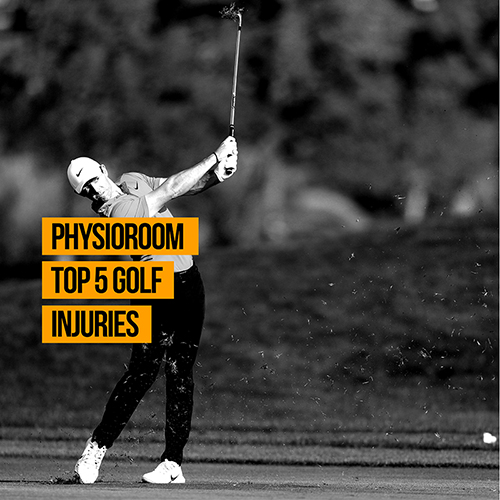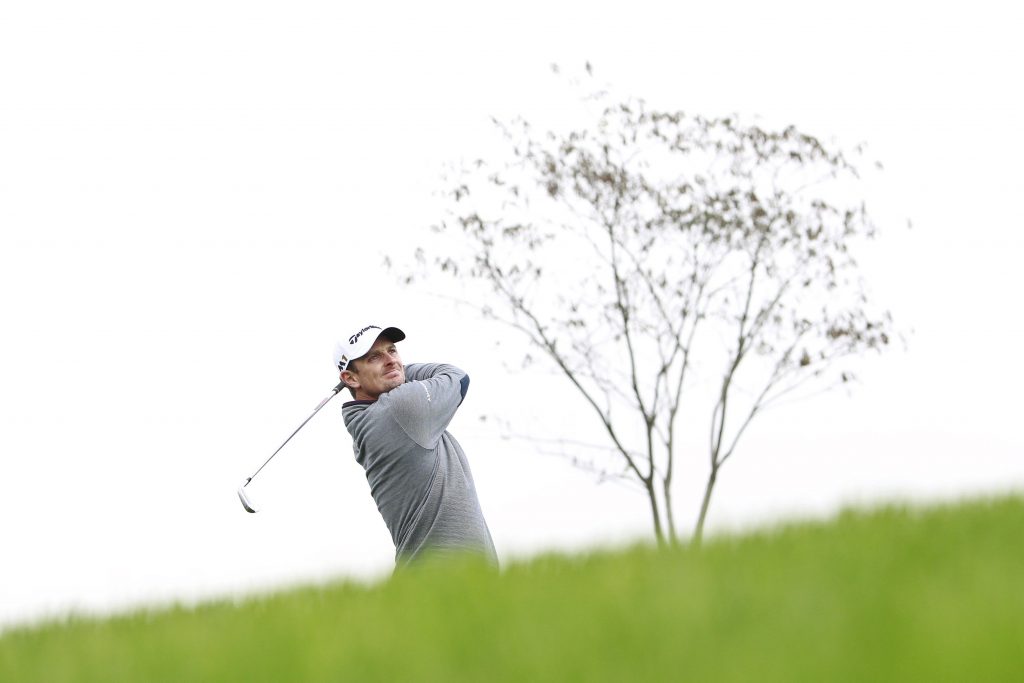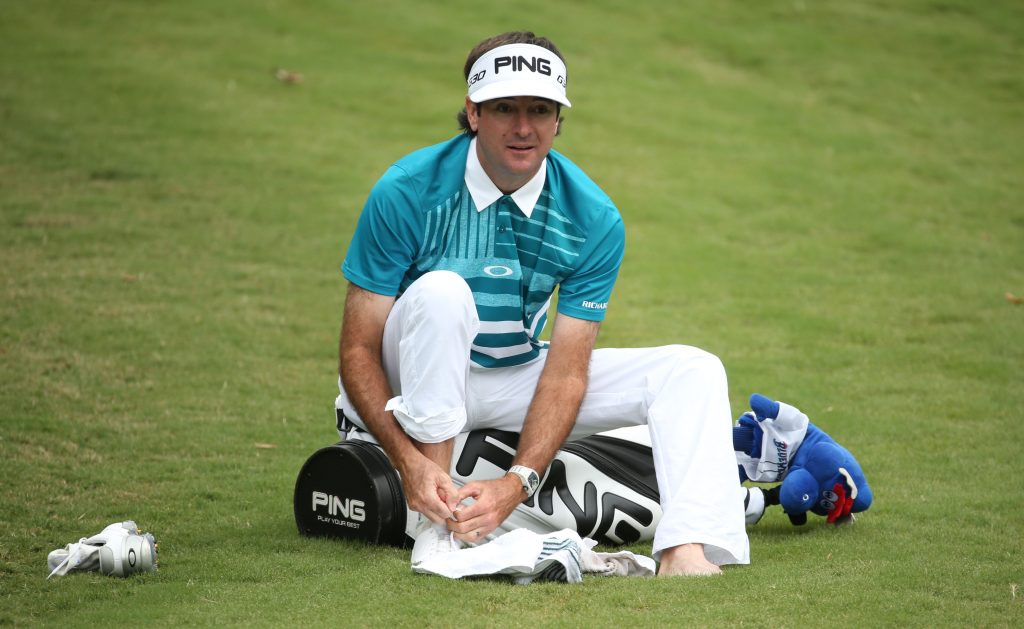It’s Ryder Cup Weekend!
The nature of golf means repetitive stress injuries are always on the cards. We’ve seen players like Tiger Woods quite literally break down from these injuries. The unnatural movements and places of strain/pressure in golf add up to create the perfect injury storm.
That’s why here at PhysioRoom, we’re going to run through the five most common golf injuries, how to prevent them, and give some advice on what to do if you suffer them.
Join us, won’t you…
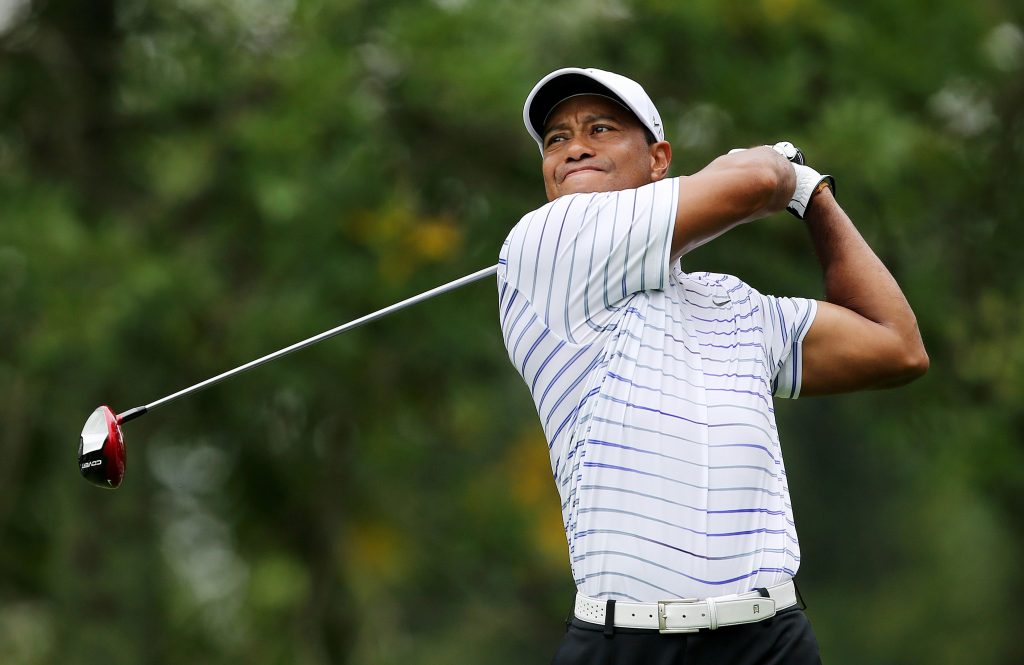
Lower Back Pain
What is it?
The most common offender when it comes to golfing injuries, lower back pain is caused by the repetitive action of the golf swing. With that said, it’s very important to ensure any swing faults should be corrected by a professional.
A ‘reverse angle’ swing fault is a common cause of back pain that occurs when the spine deviates from the vertical during the swing.
Numerous structures of the lower back can be affected by lower back pain – the discs, ligaments, muscles or facet joints – but in golfers, particularly those of a certain ripeness, the discs are most commonly affected. A herniated disc, or ‘slipped disc’ refers to a protrusion of gel material from inside the disc. This can cause back pain and/or sciatica, particularly while bending forwards.
How can you prevent it?
Core strength and stability exercises can be effective in the prevention of lower back pain, research has shown. They are most effective where back pain is caused by poor posture combined with the stress of the swing.
How can you treat it?
Pain-relieving medication prescribed by a doctor and heat packs are usually necessary during the first few days following a herniated disc. Research has shown that patients with a herniated disc should remain as active as they possibly can, so long as their symptoms are not aggravated. A back brace can be helpful to improve posture and relieve pain by preventing aggravating movements.
Golfer’s Elbow
What is it?
Golfer’s elbow is inflammation of the tendons of the forearm at the point where they insert into the humerus (upper arm) bone on the inner side of the elbow. This inflammation is caused by forceful gripping activities such as when gripping the golf club, particularly if you have a ‘wristy’ technique.
Golfer’s elbow causes pain when the inner part of the elbow (Medial Epicondyle) is touched, and also if the elbow is straight and the hand is moved forward and back at the wrist. Typically the pain is made worse by gripping activities and in some cases simple things like picking up a bag or briefcase can cause intense pain.
How can you prevent it?
Gripping the golf club too hard can bring on the Golfer’s Elbow pain. If you play golf for the first time in a long while make sure that you regularly stretch the muscles which work over the wrist by doing ‘limp-wrist’ and ‘policeman halting traffic’ type stretches.
Many people get symptomatic relief from Golfer’s Elbow by wearing a Golfer’s Elbow Compression Strap. Elbow straps work by preventing the wrist extensor muscles from contracting fully, thus reducing the strain on the tendons at the elbow. This reduces elbow pain.
How can you treat it?
The inflammation of Golfer’s Elbow usually responds well to rest and ice therapy, as well as anti-inflammatory medication prescribed by a doctor. However, in longstanding cases, where there is degeneration of the extensor tendons, anti-inflammatory medication, and especially corticosteroid injections, should be avoided because they can hinder tissue healing and in fact cause more degeneration. A TENS Machine can be a more effective form of pain relief.
Golfers Elbow rehabilitation is achieved using a resistance band strengthening programme for the flexor tendons. It’s crucial that the load and number of repetitions are carefully recorded and progressively increased under the supervision of a chartered physiotherapist. This ensures that the overload on the tendon is carefully controlled and gradually increased.
Plantar Fasciitis
What is it?
Plantar Fasciitis is inflammation of the plantar fascia (a fibrous sheath under the sole of the foot), at its attachment to the heel bone. It is a common cause of heel pain in golfers that typically comes on when walking round the golf course. Plantar Fasciitis is particularly prevalent in those golfers with poor foot wear. Pain is common on the underside of the heel and the sole of the foot. A common sign of Plantar Fasciitis is heel pain upon waking in the morning when taking the first steps of the day.
How can you prevent it?
Inappropriate footwear plays a major role in the development of Plantar Fasciitis. Golf shoes that have a lack of support for the sole of the foot are the biggest culprits, causing foot pain when walking around the course. A lack of support for the arch of the foot can cause excessive pronation (uncontrolled lowering of the arch) that can predispose golfers to Plantar Fasciitis.
Research has shown that Orthotic Insoles that support the arch on the inner side of the foot can be helpful for limiting excessive pronation and preventing the pain of Plantar Fasciitis and heel pain.
How can you treat it?
Apply ice packs (never apply ice directly to the skin) to the heel and sole of the foot for pain relief. Anti-inflammatory drugs prescribed by a doctor can provide relief for painful Plantar Fasciitis and wearing a heel support can take the strain off the painful heel when walking and playing golf.
Once the pain of Plantar Fasciitis begins to settle then stretching the Plantar Fascia helps to speed up healing in over 80% of cases. A Plantar Fasciitis Night Splint applies a sustained stretch to the Plantar Fascia during sleep, which helps to stretch and align the tissues and relieve foot pain.
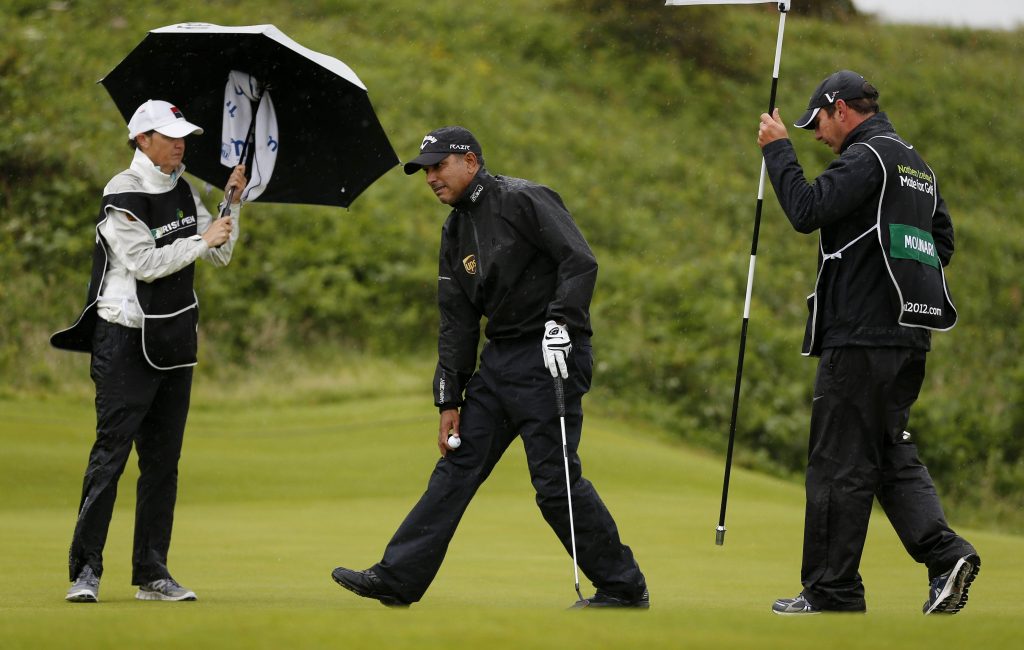
Knee Pain
What is it?
Knee pain is fairly common in golfers. Weight bearing and rotational forces on the knee during the golf swing, in addition to prolonged walking can aggravate existing knee injuries and lead to knee pain, particularly in the leading knee. Often the original knee injury is sustained doing a different activity or sport, but later in life golf becomes the activity that causes knee swelling and pain. Previous injuries to the meniscus (cartilage) or cruciate ligaments can predispose the knee joint to arthritis that can flare up due to the stresses placed on the knee during golf.
How can you prevent it?
Pain in the knee joint can lead to weakness of the quadriceps (thigh) muscles. This leads to a vicious circle of further knee joint instability and more pain, leading to more inhibition and muscle weakness. Exercises to maintain quad and hamstring strength are encouraged to provide support for the affected joint. This strengthening should be done under the supervision of a chartered physiotherapist.
Gel Cushion Insoles in golf shoes can reduce the stress on the knees during golf. This can help to prevent knee pain symptoms and provide a more comfortable round of golf.
How can you treat it?
A rest from golf is usually needed to prevent further stress on the knee joint. Ice packs can be applied for periods of twenty minutes every couple of hours (never apply ice directly to the skin as it can cause an ice burn). Alternatively an Aircast CryoCuff ice and compression device can relieve knee pain and swelling.
A knee brace can provide support and help to relieve knee pain during golf. Knee pain from arthritis tends to be worse in colder weather so many people find that a Neoprene Knee Support can provide warmth and support.
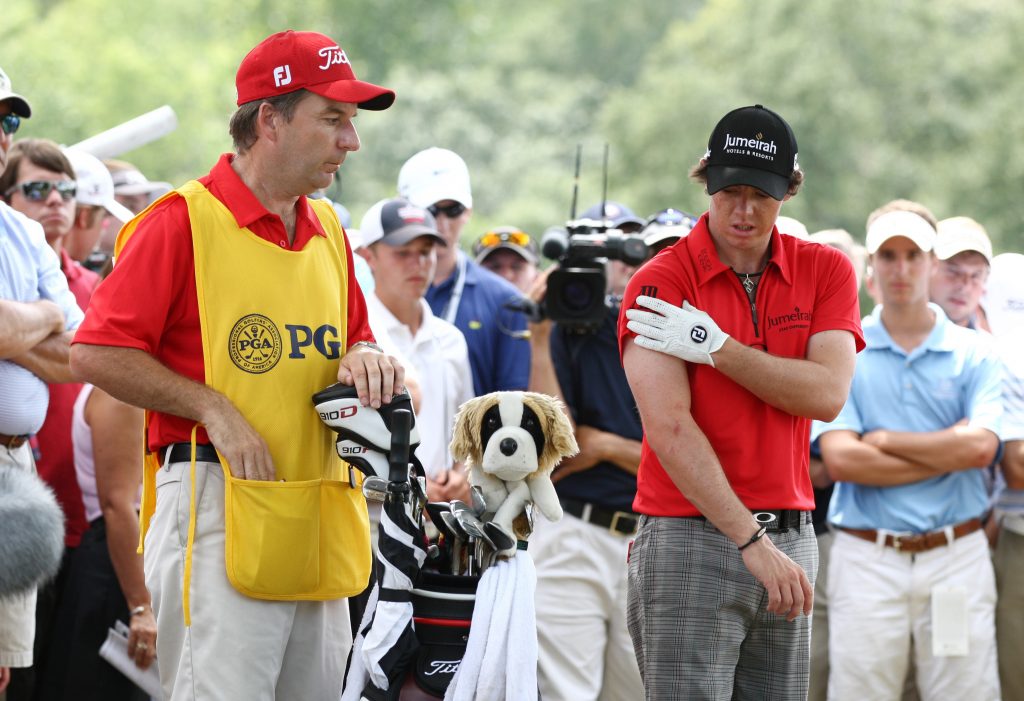
Shoulder Pain
What is it?
Shoulder pain can occur in golfers due to damage to the rotator cuff muscles. The rotator cuff muscles (Subscapularis, Supraspinatus, Infraspinatus and Teres Minor) are small muscles situated around the shoulder joint, which can become damaged during the repeated stresses of the golf swing, particularly if there is a swing fault such as ‘chicken winging’ (bent elbows at ball contact) or a ‘C-Shaped Posture’ (rounded lower back) that can put too much stress on the shoulders.
Rotator cuff injuries usually begin as inflammation (Tendonitis) caused by small but repeated irritation. If the cause of the inflammation is not addressed, and continues over a long period of time, partial tears may develop in the cuff that could eventually become a tear all the way through one or more of the rotator cuff muscles.
How can you prevent it?
Golfers have to ensure they maintain flexibility, strength and endurance of the shoulder muscles. Shoulder stabilisation exercises using resistance bands under the supervision of a chartered physiotherapist can also help prevent pressure on the rotator cuff tendons.
In addition, golf swing technique should be checked by a professional to ensure that the shoulder posture and co-ordination during golf doesn’t overload the rotator cuff muscles.
How can you treat it?
Physiotherapy treatment aims to reduce the amount of inflammation using ice therapy (never apply ice directly to the skin) and anti-inflammatory medication prescribed by a doctor. Anti-inflammatory gel may be more appropriate where anti-inflammatory tablets are not well tolerated. For those who want to continue to play golf a Neoprene Shoulder Support can provide support and reassurance.


